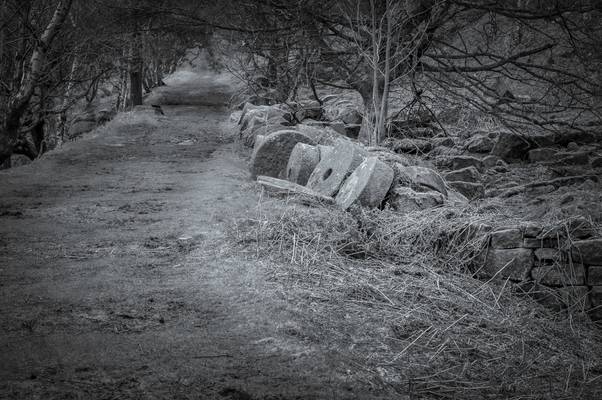Bole Hill Quarry

0
My website: Deep Mono Photography
Bole Hill Quarry is an "Elephant's Graveyard" of abandoned Millstones. It was first worked for grindstones in the late 19th century, but the majority of the stone was quarried from here between 1902 and 1910, for the 1.25 million tons of stone used in the Derwent and Howden dams. Gritstone millstones were known by millers as “peaks”, and came in pairs. Grain was ground between the close fitting pair of stones to produce rough flour. Gritstone millstones fell out of fashion because they had a tendency to turn flour a grey colour. The were replaced with churt composite millstones, or “French” stones, which although more expensive to manufacture produced a white flour, and needed re-facing less often. Millstones from this quarry are reported to have been transported to the river Trent by placing an axle through 2 millstones and driving them over the moors. From the Trent they were transported by river to Hull and then distributed around the country from that port.

0
My website: Deep Mono Photography
Bole Hill Quarry is an "Elephant's Graveyard" of abandoned Millstones. It was first worked for grindstones in the late 19th century, but the majority of the stone was quarried from here between 1902 and 1910, for the 1.25 million tons of stone used in the Derwent and Howden dams. Gritstone millstones were known by millers as “peaks”, and came in pairs. Grain was ground between the close fitting pair of stones to produce rough flour. Gritstone millstones fell out of fashion because they had a tendency to turn flour a grey colour. The were replaced with churt composite millstones, or “French” stones, which although more expensive to manufacture produced a white flour, and needed re-facing less often. Millstones from this quarry are reported to have been transported to the river Trent by placing an axle through 2 millstones and driving them over the moors. From the Trent they were transported by river to Hull and then distributed around the country from that port.